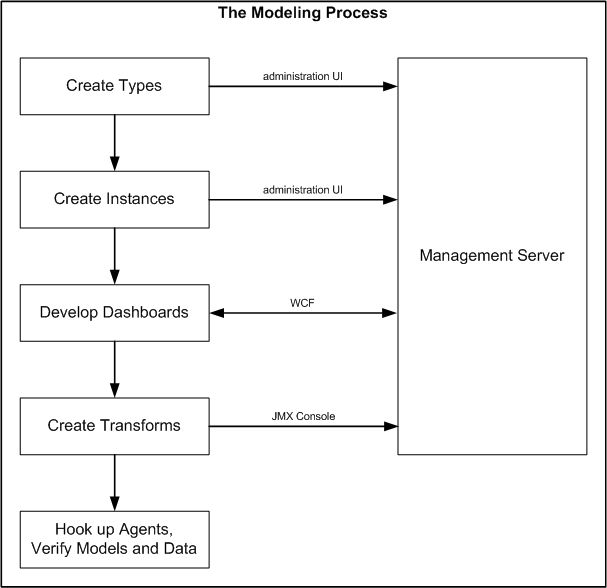The Foglight data model
This section provides an introduction to models and discusses the Foglight data model.
What are models?
|
• |
You can examine the dynamic data objects in the data browser (Dashboards > Configuration > Data > Management Server > All Data). |
Who needs to know about models?
NOTE: You can use any executable on the client system that writes to STDOUT. All you need is a script to launch the application.
Design and build the dashboards to present the data in the Management Server using WCF. Tool: the component editors in Definitions. Resources: the Web Component Tutorial and the Web Component Reference pages. |
Modeling process overview
The modeling process is illustrated in the following diagram.
Ideally, the final-form agent is feature complete and collecting data when you reach this step.

